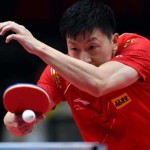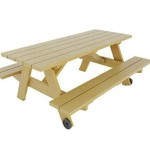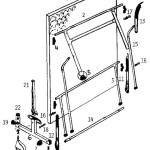Standard Billiard Table Height: A Comprehensive Guide
The game of billiards, enjoyed by millions worldwide, is a pursuit that demands precision, focus, and a properly configured playing environment. While many factors contribute to a successful billiards experience, the height of the billiard table is paramount. An improperly sized table height can negatively impact a player's stance, stroke, and overall accuracy, hindering their ability to play effectively. This article delves into the standard billiard table height, exploring the rationale behind the standard, the potential impact of variations, and methods for assessing and addressing any height discrepancies.
The term "billiard table" encompasses a range of games, including pool, snooker, and carom billiards. While these games differ in their rules, ball sizes, and table dimensions, the standard height specification remains relatively consistent across variations. This consistency is crucial for ensuring a level playing field and predictable gameplay, regardless of the specific game being played. The height influences the angle at which the cue stick strikes the cue ball, which directly affects the ball's trajectory and spin. Understanding and adhering to the standard height is thus essential for both recreational and professional players.
The Accepted Standard Height
The generally accepted standard height for a billiard table, measured from the floor to the top of the playing surface (the cloth), is between 29.25 inches (74.3 cm) and 31 inches (78.7 cm). This range is specified by various billiard organizations and governing bodies, including the World Pool-Billiard Association (WPA) and the Billiard Congress of America (BCA). The slight variance within the range allows for minor manufacturing tolerances and adjustments to suit individual preferences or minor floor level inconsistencies. The overarching aim is to ensure that the table provides a comfortable and ergonomic playing experience for the majority of players.
This height range didn't emerge arbitrarily; it's the result of years of observation, experimentation, and refinement. The goal was to find a height that allows the average player to maintain a stable and balanced stance, comfortably reach all areas of the table, and execute shots with a natural and consistent stroke. Too high, and the player must reach upwards, affecting their control and potentially leading to shoulder strain. Too low, and the player is forced to bend excessively, impacting their balance and causing back discomfort. The 29.25 to 31 inch range represents a compromise that optimizes both comfort and performance for a broad spectrum of players.
It's also important to recognize that this standard is predominantly geared towards adult players. Junior billiard tables, designed for children and adolescents, will naturally have a lower height to accommodate their smaller stature. These smaller tables are often found in family entertainment centers and are intended for recreational play rather than serious competition.
Impact of Deviations from the Standard Height
A billiard table that deviates significantly from the standard height range can have a detrimental impact on a player's game. These effects are subtle but can compound over time, leading to inconsistencies and frustration. Even a seemingly small variation of an inch or two can be noticeable, particularly for experienced players who have developed a refined sense of feel and precision.
If a billiard table is too high, players will typically need to elevate their shoulders and reach upwards when attempting to strike the cue ball. This unnatural posture can lead to several problems. First, it increases the likelihood of tension in the shoulder and neck muscles, potentially causing fatigue and discomfort during longer playing sessions. Second, it reduces the player's ability to maintain a stable and consistent stance, making it more difficult to control the cue ball's trajectory and spin. Third, it can alter the player's visual perspective, affecting their perception of angles and distances. These combined effects can result in missed shots, inconsistent performance, and a reduced overall enjoyment of the game.
Conversely, if a billiard table is too low, players will be forced to bend excessively at the waist in order to reach the playing surface. This posture places undue stress on the lower back muscles and can cause discomfort and pain, especially for individuals with pre-existing back problems. Furthermore, bending over too far can restrict the player's breathing and limit their range of motion, making it difficult to execute a smooth and controlled stroke. A low table can also affect the player's ability to see the entire table clearly, potentially obscuring obstacles and hindering their shot selection.
Beyond impacting individual performance, a non-standard table height can also create an uneven playing field in competitive settings. If players are accustomed to practicing on tables that adhere to the standard height, they may find it difficult to adjust to a table that is significantly higher or lower. This can give an unfair advantage to players who are more adaptable or who are familiar with the specific table in question. For these reasons, maintaining the standard table height is crucial for ensuring fairness and consistency in competitive billiards.
Assessing and Correcting Table Height
Determining whether a billiard table conforms to the standard height is a straightforward process that requires only a few simple tools. The primary tool is a reliable measuring tape or ruler. The measurement should be taken vertically from the floor to the highest point of the playing surface, which is typically the cloth. It is advisable to take multiple measurements at different points around the table to account for any slight variations in the floor's level or the table's construction.
If the measurements fall within the 29.25 to 31 inch range, the table is considered to be at the standard height. However, if the measurements fall outside of this range, corrective action may be necessary. In the case of a table that is too low, the most common solution is to use shims or risers under the table legs. These shims can be made from wood, rubber, or other durable materials, and they should be of uniform thickness to ensure that the table remains level. It is important to choose shims that are sturdy enough to support the weight of the table and that will not compress or degrade over time.
Correcting a table that is too high is more challenging. In some cases, it may be possible to adjust the table's legs if they have built-in levelers. However, if the table is significantly higher than the standard, it may be necessary to modify the legs or even replace them entirely, which can be a complex and costly undertaking. It is generally recommended to consult with a professional billiard table installer or repair technician before attempting any major alterations.
In addition to adjusting the table's height, it is also important to ensure that the playing surface is perfectly level. An unlevel table can cause the balls to roll unpredictably, making it difficult to execute accurate shots. The levelness of the table can be checked using a spirit level. The level should be placed on the playing surface in multiple directions to ensure that it is level in all planes. If the table is not level, adjustments can be made to the legs or shims can be added to the lower legs to compensate for any unevenness in the floor.
Maintaining the standard billiard table height is a crucial aspect of creating a comfortable and enjoyable playing experience. By understanding the rationale behind the standard, recognizing the potential impact of deviations, and knowing how to assess and correct table height, players can ensure that their game is not negatively affected by an improperly sized table. Whether a player is a casual enthusiast or a seasoned competitor, adhering to the standard table height is essential for achieving optimal performance and maximizing their enjoyment of the game.

The Official Size Of A Pool Table Canadian Home Leisure

How Tall Is A Standard Pool Table Height Guide

What Is The Standard Size Of A Pool Table Measurement Guide Room

How To Measure A Pool Table 4 Dimensions

Pool Table Room Size Calculator

Standard Pool Table Size Contemporary Home Office Furniture Check More At Http Www Nikkitsfun Com Standar Dimensions Sizes

Correct Pool Table Dimensions To Leave Enough Room For Playing Billiard

Room Size Pooltables Com

Pool Table Height Google Search Professional Dimensions

Room Size Specifications Olhausen Billiards
Related Posts








